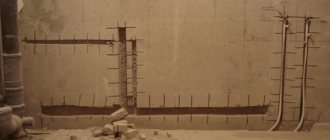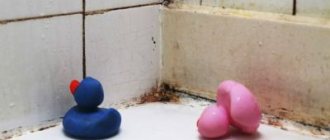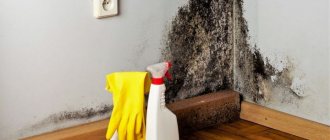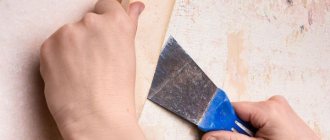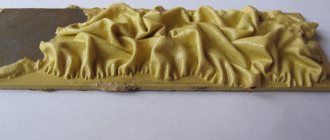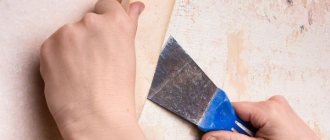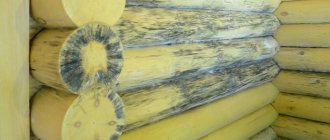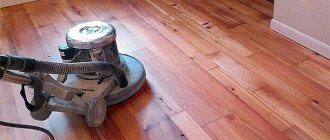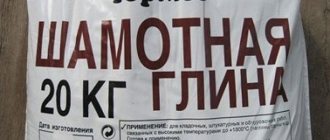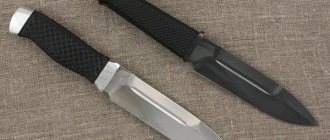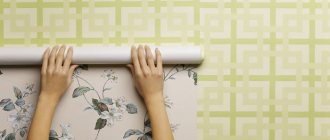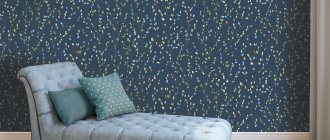30269 0 13
Andrey November 20, 2016Specialization: facade finishing, interior finishing, construction of dachas, garages. Experience of an amateur gardener and gardener. We also have experience in repairing cars and motorcycles. Hobbies: playing the guitar and many other things that I don’t have time for :)
Washable wallpaper periodically needs cleaning, which is not surprising, because they are usually used to cover areas of the walls that are most susceptible to contamination. Despite the ability of such wallpaper to withstand moisture, this procedure often becomes a real problem for housewives. Therefore, in this article I decided to tell you how to wash wallpaper from dirt using various folk methods that have proven themselves to be effective.
You can wash the wallpaper with a sponge
Which wallpapers are washable?
First of all, in order to avoid unpleasant situations and not spoil the coating, let's figure out what wallpaper can be washed. I think everyone understands that paper wallpaper cannot be washed.
Vinyl and non-woven wallpaper are called washable. However, not everyone knows that these fabrics may have different resistance to moisture and cleaning agents. Therefore, manufacturers inform customers about this characteristic of the material using special designations that are applied to the wallpaper packaging :
| Designation | Features of the canvas |
| One wave | Such wallpaper is moisture resistant, but not washable. Therefore, they can only be wiped with a damp cloth, doing this very carefully. In this case, no cleaning agents should be used. |
| Two waves | Fabrics of this type are washable, i.e. they can be washed with soapy water. However, this must be done very carefully. |
| Three waves | Fabrics with this designation are called super washable. They are resistant to water and can be washed using any household detergent. |
| wave with crest | Such fabrics are resistant not only to moisture, but also to friction. Thanks to this, they can be washed using a brush. It is also allowed to clean them with a washing vacuum cleaner. The price of these canvases is the highest, but in some cases their use is quite justified, for example, they are an excellent choice for the work area in the kitchen, as well as for children's rooms. |
Designation of wallpaper resistance to moisture and cleaning
It must be said that not only vinyl and non-woven wallpaper can be washed. Paintable glass wallpapers withstand moisture well. However, it should be borne in mind that a lot depends on the paint with which they are painted. If the paint is not moisture-resistant, then, of course, you cannot wash such wallpaper.
Fiberglass wallpaper is not afraid of moisture
Liquid wallpaper is often used in kitchens. They themselves are not resistant to moisture. This coating can simply be washed off the wall with a wet rag or sponge. However, if liquid wallpaper is varnished, it becomes resistant to moisture.
Another type of wallpaper that often attracts people is paper canvases, as they often have an attractive appearance and are much cheaper than their vinyl counterparts. I already said above that this finishing material does not withstand washing . However, many people are interested in how to cover the wallpaper so that they can be washed?
Wallpaper varnish
It is indeed possible to make such canvases moisture resistant. For these purposes, there are special wallpaper varnishes of the type VAK-A-104 .
People often wonder whether non-woven wallpaper can be washed if its moisture resistance level is unknown. I’ll say right away that all types of this finishing material can withstand wet cleaning. As for more thorough washing, resistance to it can be checked by washing a small inconspicuous area, which, for example, is hidden behind furniture.
How and what to wash wallpaper in the kitchen, tips from experts
The kitchen is a room where activities involving food take place all the time. Whatever wallpaper you put there, over time it will absorb various types of dirt. If you chose washing cloths when finishing the kitchen, then it is possible to wash any defects that are present. When choosing a cleaning product, it is necessary to determine the type of contamination.
Getting ready to clean the kitchen
Methods for washing wallpaper
So, we figured out the types of washable wallpaper. Now let's look at how to wash wallpaper at home. There are quite a lot of different folk remedies, however, the truly effective ones are the following:
Traditional methods of cleaning wallpaper
Next, we will consider in detail each of these methods of cleaning wallpaper.
Baking soda
Method 1: Baking soda solution
The simplest solution for cleaning wallpaper is a solution of baking soda. The instructions for its use are extremely simple:
- baking soda should be mixed with warm clean water in the proportion of 20 g of soda per 1 liter of water;
- Next, you need to prepare a clean, soft rag or sponge;
- then soak the sponge in water, wring it out, and wipe the dirty areas with it.
This method is quite universal, as it helps to get rid of various deposits that often appear on linens in the kitchen.
Soapy water is the most common wallpaper cleaner.
Method 2: soapy water
Another simple and quite effective means of cleaning the surface from various types of contaminants is a soap solution. In this case, the work is carried out like this:
- prepare a soap solution in a ratio of 1:10;
- then you need to dip a sponge into the solution and rub the contaminated area with it;
- After removing the dirt, the sponge should be rinsed in clean water and wiped over the surface of the wallpaper to remove the soap solution.
I must say that with this method you can erase marks from felt-tip pens, pencils and some other stains. True, both soap and soda solutions are effective only if the dirt is not deeply ingrained into the coating .
To avoid the hassle of removing stains that have become embedded in the surface, try to get rid of them immediately after they appear.
Before use, talc must be poured onto a sponge.
Method 3: cleaning with talcum powder
If you need to clean the surface of grease, use talcum powder. Work with this tool is carried out in the following sequence:
- Cover the surfaces around the contaminated area with oilcloth or newspapers. This is necessary so as not to cover everything around with talcum powder;
- Next, pour the powder into a sponge and treat the greasy stains with it;
- let the surfaces sit for 10-15 minutes;
- then remove the talc using a dry sponge;
- If you are unable to completely get rid of the greasy marks the first time, treat the surface again with talcum powder and gently heat the contaminated area with an iron through a cloth.
Bread will help get rid of grease stains
There is another popular way to remove fat. Its essence lies in the fact that the contaminated area is rubbed with bread crumb. The gluten contained in its composition removes this kind of contamination well.
Lemon acid
Method 4: citric acid
Various plaques, including greasy ones, are well removed by citric acid. It should be used as follows:
- Add a few tablespoons of citric acid to a glass of warm water;
- then moisten the sponge in a solution of citric acid and treat the contaminated area with it;
- the treated area should be left for five minutes;
- then the contaminated surface should be lightly rubbed with a sponge soaked in citric acid;
- After cleaning the contaminated area, it should be wiped with a sponge soaked in clean water to remove citric acid.
It should be noted that this method washes off the alcohol marker well, which can be used by little art lovers to stain the walls.
Marks from felt-tip pens can be removed with alcohol.
Method 5: alcohol
If you don’t know how to clean stubborn grease stains, or traces of felt-tip pens and markers, splashes of food prepared in the kitchen, etc., use alcohol. This cleaning method is quite simple and quick:
- moisten a cotton swab with alcohol;
- Immediately wipe the stained area with it before the alcohol evaporates.
It must be said that this method also easily removes sticker marks, mosquito stains and other similar aerosol products.
Dish detergent will help clean wallpaper from various contaminants.
Method 6: Dish detergent
If your wallpaper can withstand detergents, you can use dishwashing detergent to remove grease and other contaminants. Working with it is carried out as follows:
- add a few drops of detergent per liter of warm water;
- moisten the sponge in the resulting solution and treat the contaminated area with it;
- After some time, wipe the area with a sponge soaked in clean water to remove the cleaning solution.
This method allows you to combat dirt more effectively than a regular soap solution.
In the photo - a solution of hydrochloric acid
Method 7: hydrochloric acid
People often ask on forums how to remove brilliant green? This type of contamination is most effectively dealt with by hydrochloric acid . It is applied as follows:
- take a three to five percent solution of hydrochloric acid;
- moisten a sponge or rag with acid and wipe the area of wallpaper contaminated with brilliant green with it;
- To finish the job, wipe the surface with a sponge soaked in clean water.
If mold appears on the surface of the wallpaper, it can be removed with whitewash. After this, mold will not appear on wallpaper treated with chlorine for a long time.
Hydrogen peroxide will help get rid of blood stains on wallpaper
Method 8: hydrogen peroxide
If you need to remove blood from a finish, use hydrogen peroxide. The surface cleaning process is very simple:
- soak a cotton swab in hydrogen peroxide;
- Wipe off the blood with a swab. At the same time, change sides of the tampon so as not to stain clean areas with blood;
- then wipe the surface with a damp sponge or cloth.
Method 9: Vinegar
Sometimes it becomes necessary to clean wallpaper from glue remaining after careless gluing. I’ll say right away that it’s not always possible to get rid of glue, since some types of glue cannot be removed by anything after drying. However, sometimes ordinary table vinegar helps get rid of such contamination.
Vinegar should be applied using a spray bottle.
The cleaning process in this case looks like this:
- pour nine percent vinegar into a spray bottle;
- then moisten the contaminated area with vinegar;
- After 10-15 minutes, the area treated with vinegar should be wiped with a damp sponge or rag.
If the glue is fresh, i.e. If it has only dried slightly, you can use regular warm water to remove it.
Here, in fact, are all the ways to clean wallpaper from various contaminants with your own hands, which I wanted to share with you.
Do not press the sponge or rag too hard against the wallpaper during cleaning.
General instructions
In order to wash the wallpaper in the kitchen, you need to prepare certain equipment:
- material with a soft surface;
- dry cloth;
- dishwashing liquid;
- capacity;
- mixer.
Let's start a thorough cleaning of the kitchen
The action plan is as follows:
- Fill a container with warm water. Take a construction mixer, turn it on and carefully lower it into the basin. Gradually add dish soap. Perform similar actions until a dense foam is obtained.
- When the contamination is not too large, you can wash the wallpaper using the foam of the prepared solution. To remove dirt from colored canvases, you can use a household cleaner. It is also allowed to use liquid laundry detergent.
- You can wash wallpaper in the kitchen carefully and effectively by using a soft cloth. Soak it in the solution, squeeze it thoroughly and, taking a small amount of foam, begin the washing process.
- But before you wash all the wallpaper, you first need to check its strength characteristics. For these purposes, try the prepared composition on a small area of the canvas. If after the repair you still have such wallpaper, you can check it using it. Distribute the foam over the selected area and carefully, using progressive movements, blot the wallpaper with a cloth.
- Then take a dry cloth and remove any remaining foam. Wait until the area dries and check its quality. If you find deformation, the wallpaper begins to bubble, and the paint has peeled off, then you should not wash the material in this way.
If you need to clean heavy stains in the kitchen, you should also test the product on a test area first. In this case, you do not need to make maximum efforts; it is forbidden to rub the washing wallpaper. Otherwise you will remove the top thin layer of PVC film. Simply spread the foam and blot the contaminated area. Remove remaining foam and moisture with a dry cloth.
After washing, it is important to wait until the wallpaper dries. If after this contamination is still present, then you can start washing again. At the same time, make sure that the canvases dry not only outside, but also inside. If you wash the finishing material often, even detergent, otherwise it will lose its decorative properties.
A few nuances of washing wallpaper
Finally, let's look at how to wash wallpaper correctly. This operation should be carried out as follows:
- First of all, the wallpaper must be cleaned of dust. To do this, you can use a dry cloth. If the dust is not removed, dirty streaks will appear on the surface;
- then clean the surface using one of the methods described above. At the same time, do not press the sponge too hard against the wallpaper, so as not to damage the coating;
- After removing the dirt, eliminate drafts in the room so that the wallpaper does not begin to peel off. Also, do not try to force dry the surface with a hairdryer or other means. .
By following these simple rules, you can get rid of dirt on the finishing surface without damaging it.
Special cases
Fingerprint Removal
When you have washable paper wallpaper in your kitchen, remove fingerprints from their surface using regular stationery plastic. If you don’t have such a product on hand, you can take regular bread and treat the contaminated area. Thanks to the gluten present in bread, all impurities will be eliminated.
Removing greasy stains
If you need to wash fabrics contaminated with greasy stains, you can use a product such as talc. It should be poured onto a sponge and treated the contaminated area. Perform this manipulation for 10 minutes. You can remove the powder using a dry cloth.
Another option for removing grease stains is to use an iron. Apply a heated iron to the stain through a paper napkin. Iron for 10-15 minutes.
Washable vinyl wallpaper in a standard kitchen
Fighting marker marks
When there are young artists in your house, they constantly leave their masterpieces in all the rooms. The kitchen is no exception here. If you need to wash wallpaper and remove stains from a felt-tip pen, the success of this procedure depends on two conditions: the type of canvas and the type of felt-tip pen.
If you used delicate fabrics (paper and silk) to decorate the kitchen, then you will not be able to wash off the dirt. When there is washable wallpaper on the wall, and the contamination is made with a water-based felt-tip pen, you can try to remove it using a soap solution.
When the stain has been applied with an alcohol felt-tip pen, it must also be washed off with alcohol. You can also use vinegar and citric acid. Apply any of the selected products to a cotton swab and wipe the area. If the stain was not removed the first time, you can repeat the procedure again. But this can only be done after the material has thoroughly dried.
Bread crumb
You can wipe off sunflower oil that just gets on the wall with bread crumbs.
Bread crumb
Although grease can penetrate through the wallpaper, it does so rather slowly. Dry, porous bread will absorb excess fat very well, preventing it from drying out firmly even on paper wallpaper. The faster the crumb is applied to the stain, the easier it will be to remove the remaining grease later.
Stationery eraser or melamine sponge
These two items allow you to remove grease stains mechanically. Capable of removing light stains that are not deeply absorbed.
Melamine sponge
Note! Melamine sponge is a very strong abrasive that can damage the pattern of non-woven wallpaper if excessive force is applied. You should use a sponge only if the eraser does not help.
An eraser can gently remove the top layer of paper through friction. Along with this layer, the shallowly ingrained oil stain will also disappear.
Stationery eraser
This method is especially effective on wallpaper with a uniform color, where the change in shade due to the disappearance of a small layer will not be noticeable. Before using a sponge or eraser, test it on an inconspicuous area.
Using an eraser, you can even remove grease stains from linoleum in the kitchen.
